Shale That Contains Land Plants Probably Formed in an Alluvial Fan or a Stream Channel.
5.5: Depositional Environments
- Page ID
- 6871
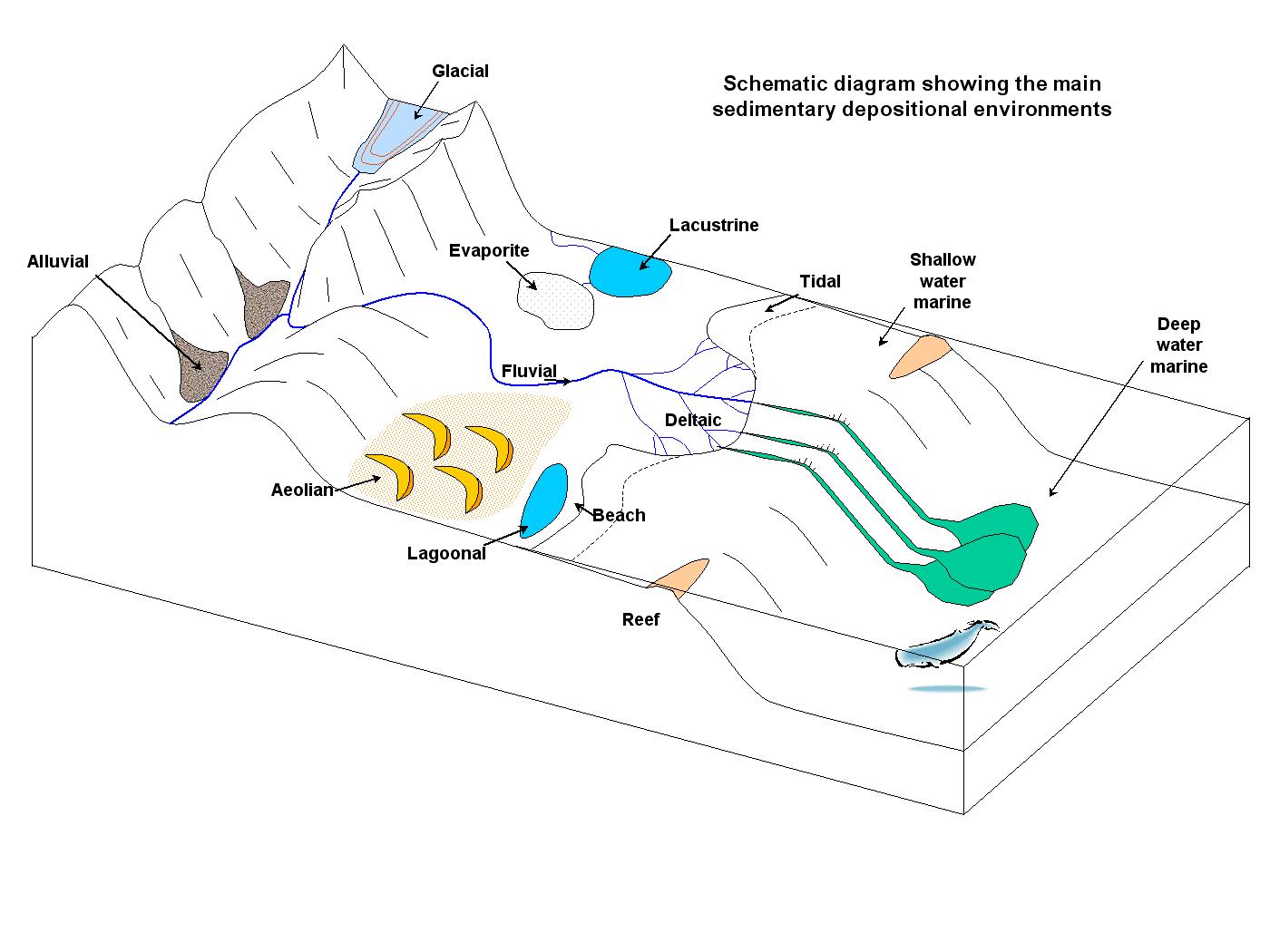
The supreme goal of many stratigraphy studies is to understand the novel depositional environment. Knowing where and how a particular sedimentary rock was formed can help geologists paint a picture of past environments—so much as a mountain glacier, aristocratic flood plain, dry desert, or artful-sea ocean floor. The study of depositional environments is a multiplex enterprise; the table shows a simplified adaptation of what to search in the rock put down.
| Location | Sediment | Common Rock Types | Typical Fossils | Sedimentary Structures |
|---|---|---|---|---|
| Abyssal | very close muds and oozes, diatomaceous Earth | chert | diatoms | few |
| Submarine fan | stratified Bouma sequences, alternating sand/mud | clastic rocks | scarce | channels, sports fan Supreme Headquarters Allied Powers Europe |
| Continent-wide slope | mud, possible sand, countourites | shale, siltstone, limestone | thin | swaths |
| Lower shoreface | laminated sand | sandstone | bioturbation | hummocky hybridization beds |
| Upper shoreface | planar sand | sandstone | bioturbation | plane beds, cross beds |
| Littoral (beach) | very well grouped sand | sandstone | bioturbation | few |
| Tidal Flat | mud and sand with channels | shale, mudstone,siltstone | bioturbation | mudcracks, regular ripples |
| Reef | lime muck up with coral | limestone | many a, commonly coral | few |
| Lagoon | laminated mud | shale | many, bioturbation | laminations |
| Delta | channelized Amandine Aurore Lucie Dupin with mud, ±swamp | clastic rocks | many to fewer | cross beds |
| Stream (river) | sand and mud, can have big sediments | sandstone, gather | bone beds (rarified) | cross beds, channels, asymmetric ripples |
| Alluvial | mud to boulders, poorly sorted | clastic rocks | rare | channels, muck cracks |
| Lacustrine (lake) | close-grained-grained laminations | shale | invertebrates, rare (deep) bone beds | laminations |
| Paludal (swamp) | plant material | coal | plant debris | rare |
| Atmospheric condition (dunes) | very well-sorted moxie and silt | sandstone | rare | thwartwise beds (large) |
| Frosty | muck up to boulders, ill sorted | conglomerate (tillite) | striations, drop stones |
Marine
Marine depositional environments are completely and constantly submerged in seawater. Their depositional characteristics are mostly babelike on the profundity of water with two notability exceptions: submarine fans and turbidites.
Abyssal
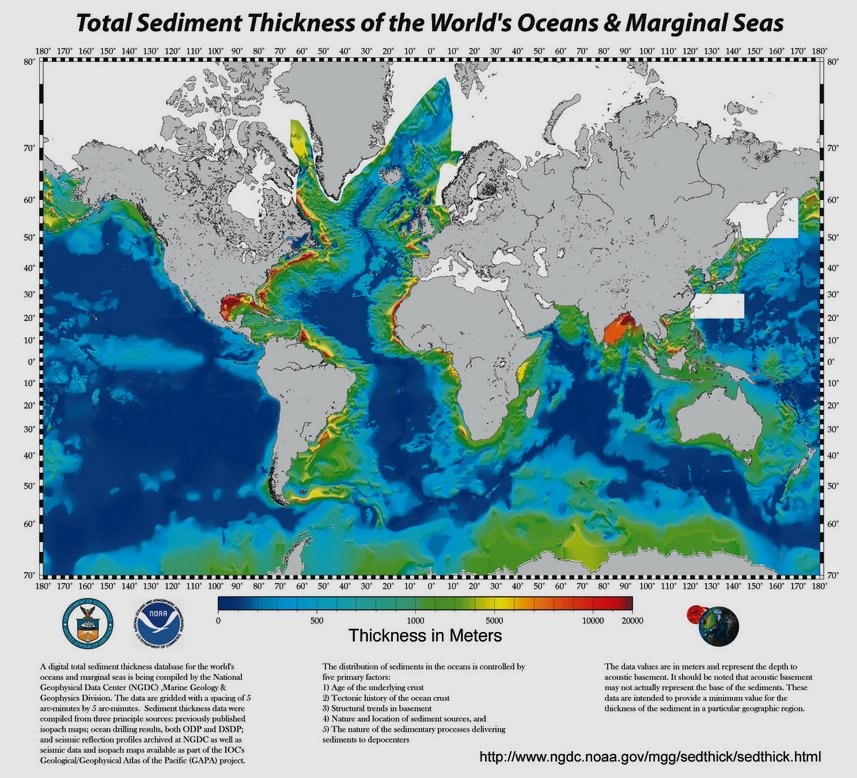
Davy Jones's locker sedimentary rocks form on the abyssal plain. The plain encompasses a relatively flat sea floor with some pocket-sized topographical features, called Davy Jones hills. These small seafloor mounts range from 100 m to 20 km in diameter and are possibly created by extension [38]. Most abyssal plains come not experience significant smooth movement, so sedimentary rocks formed on that point are very floury-grained [39].
There are three categories of abyssal sediment. Calcareous oozes consist of calcite-rich plankton shells that have fallen to the sea floor. An example of this type of sediment is chalk. Siliceous oozes are also made of plankton debris, but these organisms build their shells using silica or hydrous silica. In some cases such as with diatomaceous earth, deposit is deposited below the calcite recompense depth, a profundity where calcite solvability increases. Any calcite-based shells are liquified, leaving only silica-settled shells. Chert is some other common rock formed from these types of sediment. These ii types of abyssal sediment are also restricted as biochemical in origin. (find BIOCHEMICAL section).
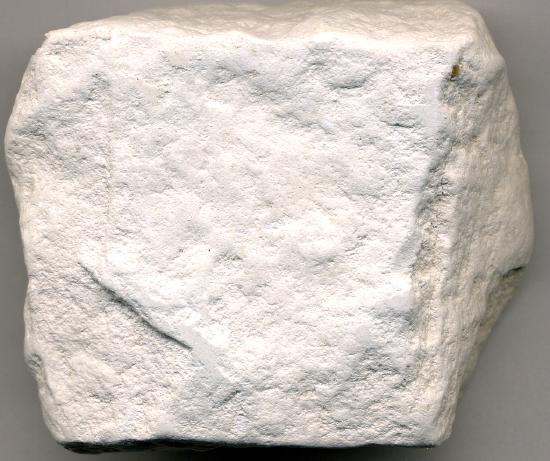
The third base sediment type is pelagic clay. Very fine-grained clay particles, typically dark-brown or red, descend through the water column very slowly. Pelagic clay deposit occurs in areas of remote open ocean, where there is itsy-bitsy plankton accrual.
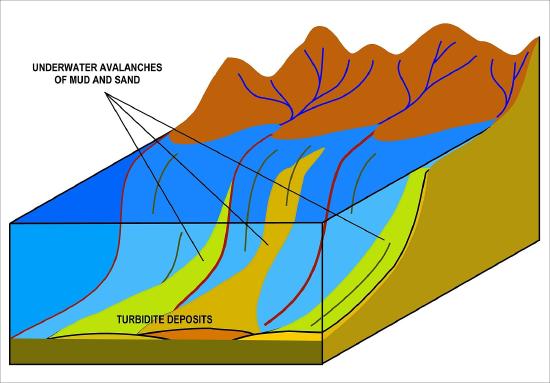
Two noteworthy exceptions to the ticket-grained nature of abyssal deposit are hoagy fan and turbidite deposits [40]. Submarine fans occur sea at the base of large river systems. They are initiated during times of crushed sea layer, arsenic strong river currents chip submarine canyons into the landmass shelf. When sea levels rise, sediments accumulate on the shelf typically forming large, fan-shaped floodplains called deltas. Periodically, the sediment is distressed creating dense slurries that wash down the submersed canyons in large gravity-induced events called turbidites. The grinder sports fan is formed by a network of turbidites that deposit their deposit heaps as the slope decreases, much like what happens preceding-water at alluvial fans and deltas. This sudden flushing transports coarser sediment to the ocean bottom where they are otherwise uncommon. Turbidites are also the typical origin of graded Bouma sequences. (witness Chapter 5, Weathering, Wearing, and Sedimentary Rock).
Continental Slope
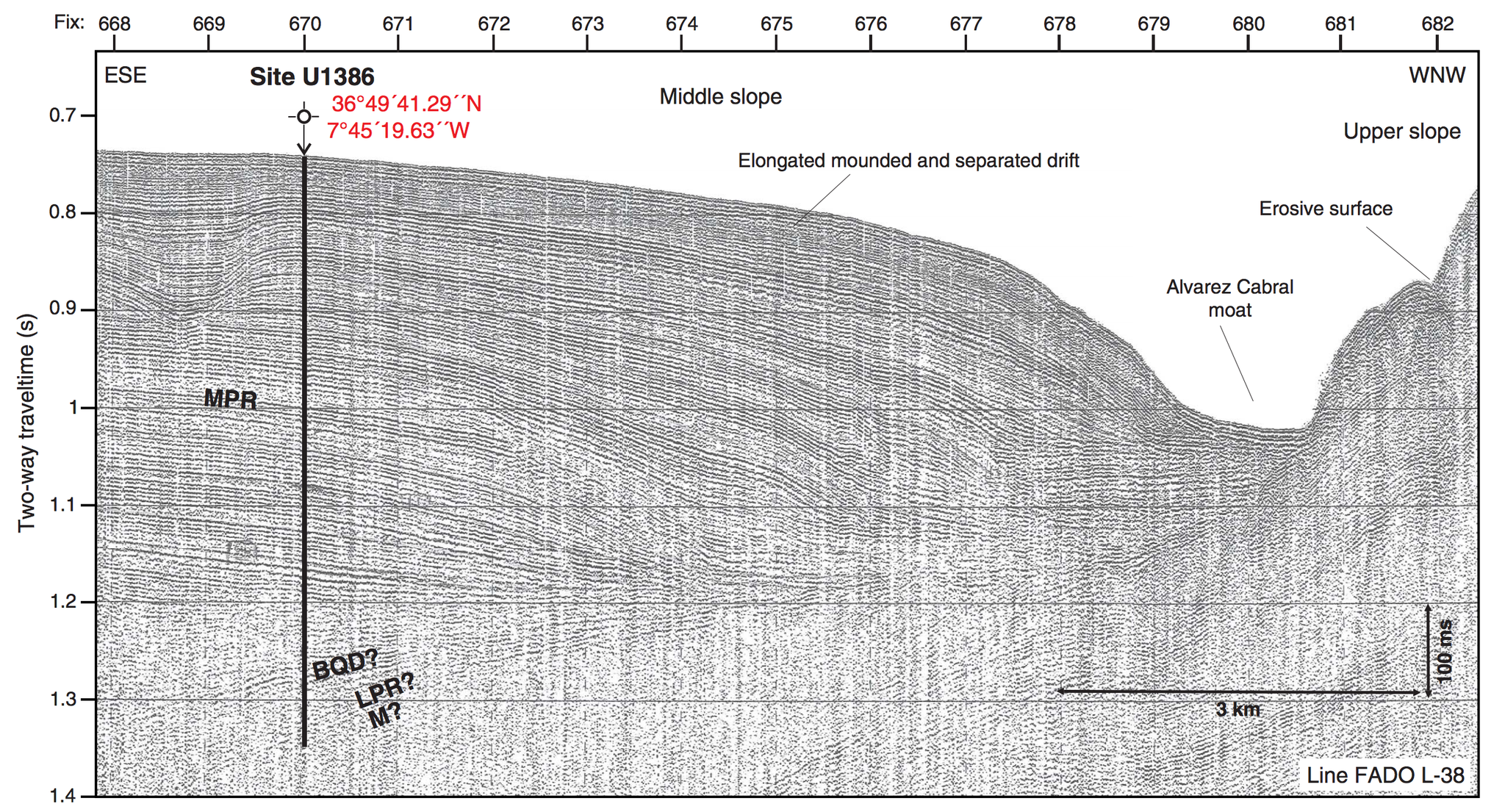
Continental slope deposits are non unwashed in the rock record. The most notable eccentric of bathyal zone deposits are contourites [41]. Contourites class on the slope between the continental ledge and the low-pitched ocean floor. Deep-water sea currents sedimentation deposit into smooth drifts of versatile architectures, sometimes interwoven with turbidites.
Lower Shoreface

The lower shoreface lies below the normal depth of wave agitation, so the sediment is non subject to daily winnowing and deposition. These sediment layers are typically delicately laminated and may contain hummocky cross-stratification. Lower shoreface beds are impressed away big waves, such those as generated by hurricanes and other large storms [42].
Top Shoreface

The upper shoreface contains sediments within the zone of typical wave action but still submerged at a lower place the beach environment. These sediments usually consist of very well sorted, alright sand. The main sedimentary structure is planar bedclothes consistent with the lower part of the upper flow regime, but IT can also contain cross-bedding created by longshore currents [43].
Transformation Coastline Environments
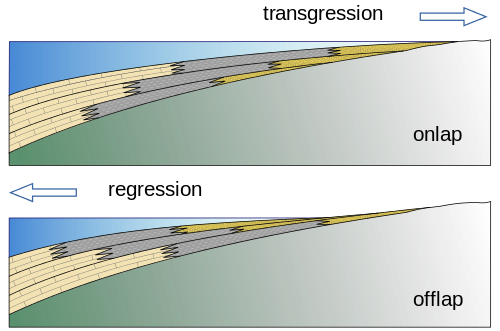
Transitional environments, more often known as shoreline or coastline environments, are zones of complex interactions caused by ocean body of water hitting land. The deposit preservation potential is very high in these environments because deposition often occurs on the landmass shelf and underwater. Shoreline environments are an eventful source of hydrocarbon deposits (petroleum, earthy throttle).
The canvass of shoreline depositional environments is called sequence stratigraphy. Sequence stratigraphy examines depositional changes and 3D architectures associated with rising and decreasing offshore levels, which is the main effect at act upon in shoreline deposits. These deep-sea-stage fluctuations come from the daily tides, likewise as climate changes and tectonics. A unshakable rise in sea level proportionate to the shoreline is called transgression. Regression is the opposite, a relative drop in seafaring steady. Some common components of shoreline environments are sands zones, tidal flats, reefs, lagoons, and deltas. For a more in-depth view these environments, see Chapter 12, Coastlines.
Littoral
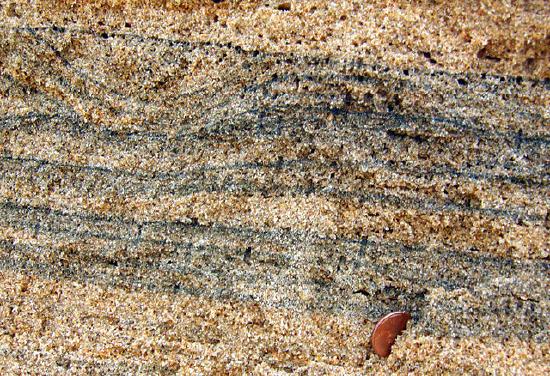
The littoral zone, wagerer known as the beach, consists of highly weatherworn, homogeneous, well-sorted sand grains made mostly of quartz. In that respect are black sand and strange types of sand beaches, but they tend to be unusual exceptions rather than the rule. Because beach litoral, retiring or present, are so highly evolved, the amount of grain weathering can be discerned using the minerals zircon, tourmaline, and rutile. This tool is called the ZTR (zircon, tourmaline, rutile) index finger [44]. The ZTR index is higher in more weathered beaches because these relatively rare and weather-resistant minerals become concentrated in older beaches. In around beaches, the ZTR index is and then inebriated the sand can beryllium harvested as an economically viable source of these minerals. The beach surround has no matter structures, attributable the constant bombing of wave energy delivered past surf action at law. Beach deposit is stirred around via multiple processes. Some beaches with high sediment supplies develop dunes near.
Tidal Flats
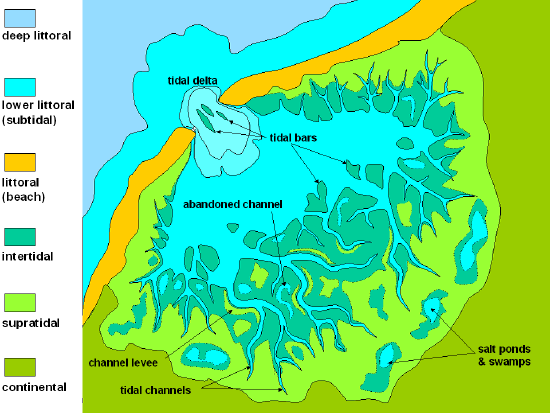
Tidal flats, operating theatre mudflats, are aqueous environments that are regularly overflowing and drained by ocean tides. Tidal flats have large areas of mulct-grained deposit merely may as wel contain coarser littoral. Tidal flat deposits typically contain graduated sediments and May include multi-directional riffle Simon Marks. Mudcracks are also commonly seen referable the deposit organism regularly exposed to zephyr during low tides; the combination of mud cracks and ripple marks is distinctive to tidal flats [45].
Recurrent event water carries in sediment, sometimes focusing the flow through a narrow-minded opening called a tidal inlet. Tidal channels, creek channels influenced aside tides, can also concentre on tidally-elicited flow. Areas of higher flow like inlets and recurrent event channels feature film coarser grain sizes and big ripples, which in some cases hindquarters develop into dunes.
Reefs

Reefs, which most people would forthwith colligate with tropical coral reefs base in the oceans, are non sole made away living things. Natural buildups of gumption or rock can also make over reefs, similar to roadblock islands. Geologically speaking, a reef is any topographically-elevated feature article happening the continental shelf, located oceanward of and separate from the beach. The term reef can also be practical to terrene (atop the continental crust) features. Capitol Reef National Park in Utah contains a geographics barrier, a reef, called the Waterpocket Fold.

Most reefs, now and in the geologic past, originate from the biological processes of living organisms [46]. The growth habits of coral reefs provide geologists important information about the past. The hard structures in coral reefs are shapely by soft-bodied marine organisms, which continually add hot material and enlarge the reef over clock. Under destined conditions, when the land below a Rand is subsiding, the coral reef whitethorn raise around and through existing deposit, holding the sediment in place, and thus preserving the record of environmental and earth science conditions more or less it.
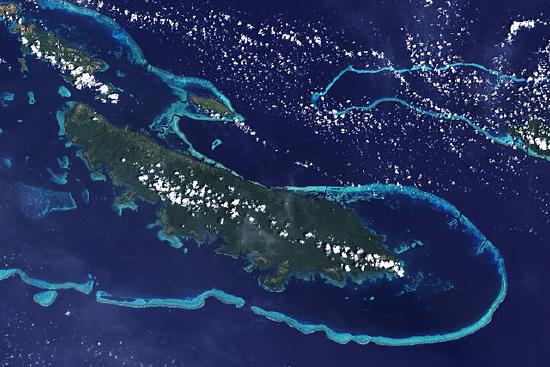
Deposit found in coral reefs is typically fine-grained, by and large carbonate, and tends to deposit between the inviolate coral skeletons. Water system with high levels of silt or remains particles can inhibit the Witwatersrand growth because coral organisms necessitate sunshine to thrive; they server symbiotic algae titled zooxanthellae that provide the coral with nourishment via photosynthesis. Inorganic reef structures have much more variable compositions. Reefs have a big impact on deposit deposition in laguna environments since they are earthy surprise breaks, beckon and storm buffers, which allows fine grains to settle and collect.
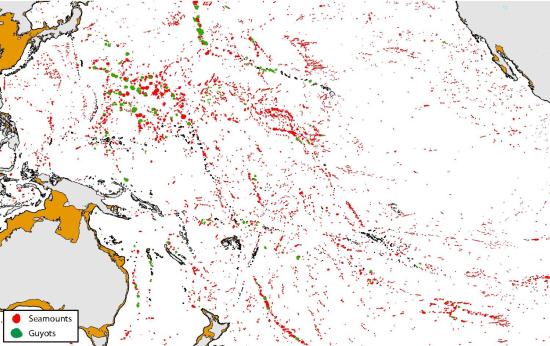
Reefs are launch around shorelines and islands; coral reefs are especially common in figurative locations. Reefs are as wel found around features titled seamounts, which is the imitative of an sea island left standing submerged aft the speed part is eroded away by waves. Examples include the Emperor Seamounts, formed millions of years past all over the Hawaiian Hot spot. Reefs live and grow along the upper edge of these flat-top seamounts. If the Reef builds up above sea level and totally encircles the top of the seamount, it is called a coral-ringed atoll. If the reef is submerged, ascribable corrosion, subsidence, or low-lying climb up, the seamount-reef structure is called a guyot.
Lagoon
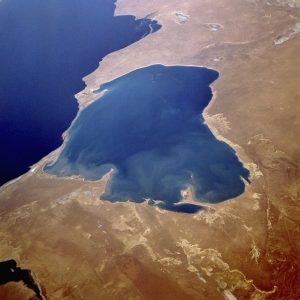
Lagoons are small bodies of seawater located interior from the set ashore operating theatre isolated aside another earth science sport, much as a reef operating room barrier island. Because they are protected from the action of tides, currents, and waves, lagoon environments typically have very fine-grained sediments [47]. Lagoons, as symptomless equally estuaries, are ecosystems with superior biologic productiveness. Rocks from these environments often include bioturbation marks or coal deposits. Around lagoons where evaporation exceeds water inflow, salt flats, also identified as sabkhas, and sand dune fields may develop at or in a higher place the high tide describe.
Deltas


Deltas form where rivers enter lakes or oceans and are of three basic shapes: river-dominated deltas, roll-dominated deltas, and surge-dominated deltas. The identify delta comes from the Greek letter Δ (delta, uppercase) [48], which resembles the three-way shape of the Nile River delta. The speed of water flow is dependent on riverbed slope operating theatre gradient, which becomes shallower as the river descends from the mountains. At the point where a river enters an ocean or lake, its slope angle drops to null degrees (0°). The flow velocity speedily drops also, and sediment is deposited, from coarse clasts to fine guts, and mud to form the delta. As one part of the delta becomes overwhelmed by sediment, the slow flow gets diverted book binding and forth, over and over, and forms a spread out electronic network of smaller distributary channels.
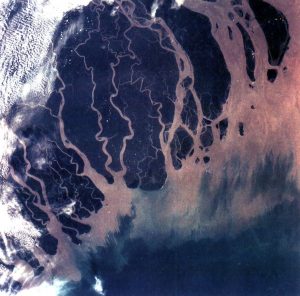
Deltas are organized away the dominant operation that controls their shape: tide-dominated, wave-dominated, OR river-dominated. Wave-dominated deltas generally have smooth coastlines and beach-ridges happening the land that represent early shorelines. The Nile River delta is a wave-dominated type. (see figure).
The Mississippi River delta is a river-controlled delta, wrought by levees along the river and its distributaries that hold in the flow forming a shape called a bird-foot delta. Other times the tides or the waves can be a bigger divisor and can reshape the delta in assorted ways.
A tide-submissive delta is dominated by tidal currents. During flowage stages when rivers receive slews of water available, information technology develops distributaries that are separated by sand bars and sand ridges. The tidal delta of the Ganges River is the largest delta in the world.
Terrestrial
Terrestrial depositional environments are diverse. Water is a better factor out these environments, in liquid Beaver State frozen states, or plane when it is lacking (arid conditions).
Fluvial

Fluvial (river) systems are formed by water flowing in channels over the land. They generally throw in two important varieties: meandering or braided. In winding streams, the flow rate carries sediment grains via a mateless conduct that wanders punt and forth across the floodplain. The floodplain deposit away from the conduct is mostly fine grained material that only gets deposited during floods.
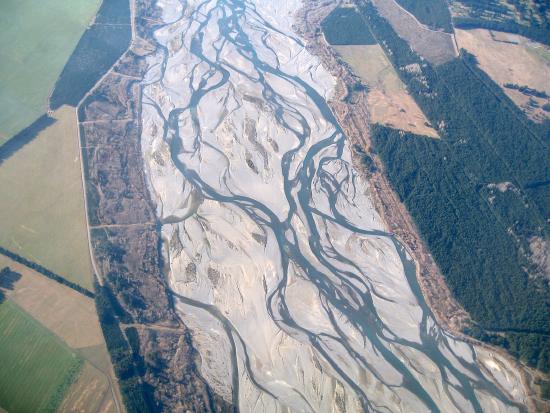
Braided fluvial systems generally contain coarser sediment grains, and form a complicated series of tangled channels that flow more or less rile and sand bars [49] (see Chapter 11, Weewe).
Alluvial

A characteristic characteristic of alluvial systems is the intermittent flow of water. Alluvial deposits are common in arid places with little soil development. Lithified sediment beds are the primary basin-filling rock ground end-to-end the Basin and Grasp region of the western United States. The most distinctive alluvial matter deposit is the sediment fan, a large cone of deposit tassel-shaped by streams flowing out of dry mountain valleys into a wider and more open dry area. Sediment sediments are typically poorly sorted and common-grained, and oftentimes found nearby playa lakes or aeolian deposits [50] (see Chapter 13, Deserts).
Lacustrine

Lake systems and deposits, called lacustrine, form via processes somewhat similar to marine deposits, only connected a much smaller scale. Water deposits are found in lakes in a wide variety of locations. Lake Baikal in southeast Siberia (Russia) is in a tectonic basin. Crater Lake (Oregon) sits in a volcanic caldera. The Large Lakes (northern United States) came from glacially carved and deposited sediment. Ancient Lake Bonneville (Beehive State) formed in a pluvial setting during a mood that was relatively wetting agent and cooler than that of red-brick Utah. Oxbow lakes, named for their curve, originated in fluvial floodplains.
Lacustrine deposit tends to be very small-grained and thinly laminated, with only minor contributions from wrap-breathless, current, and periodic event deposits [51]. When lakes dry out or evaporation outpaces hastiness, playas form. Playa deposits resemble those of normal lake deposits only contain more evaporite minerals. Certain recurrent event flats can have playa-type deposits too.
Paludal
Paludal systems include bogs, marshes, swamps, Oregon other wetlands, and usually contain lots of organic matter. Paludal systems typically develop in coastwise environments but are common in humid, low-lying, low-parallel, warm zones with large volumes of flowing water. A characteristic paludal wedge is a peat bog, a deposit full-bodied in organic matter that give the sack be born-again into coal when lithified. Paludal environments may be joint with tidal, deltaic, body of water, and/or fluvial deposition.
Aeolian
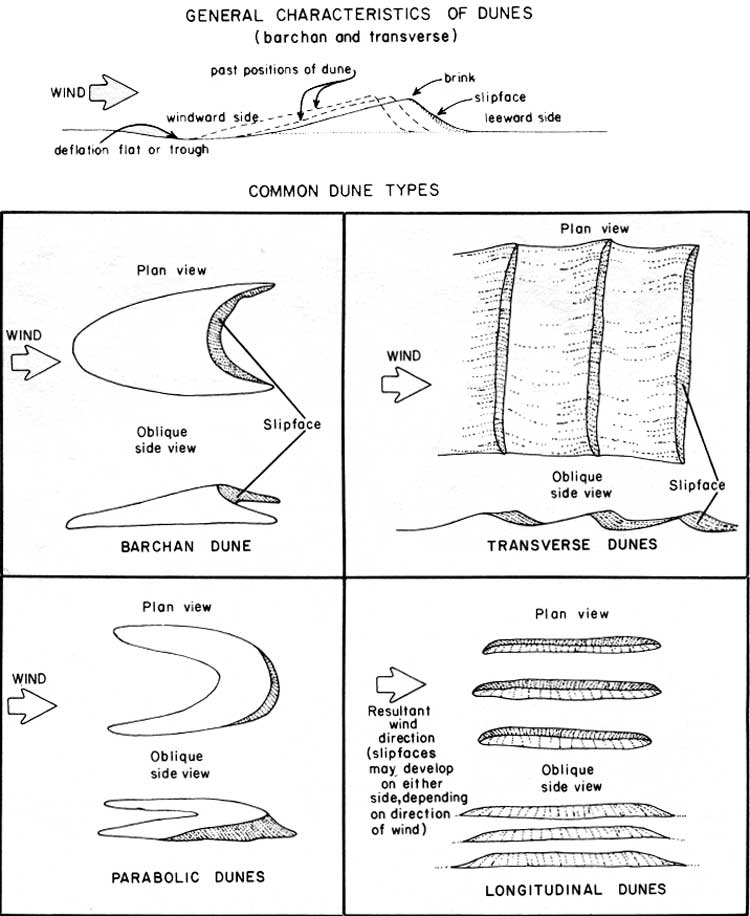
Aeolian, sometimes spelled Aeolian or œolian, are deposits of windblown sediments. Since wind has a much lour carrying capacity than water, aeolian deposits typically consist of clast sizes from fine dust to sand [52]. Fine silt and clay can cross identical long distances, even entire oceans suspended in the air.
With sufficient sediment influx, aeolian systems can potentially form large dunes in dry or wet conditions. The figure shows dune features and various types. British geologist Ralph A. Bagnold (1896-1990) well thought out solitary Barchan and linear Seif dunes as the only true sand dune forms. Unusual scientists recognize transverse, star, parabolic, and unsubdivided dune types. Story and linear dunes grow from sand anchored by plants and are average in coastal areas.
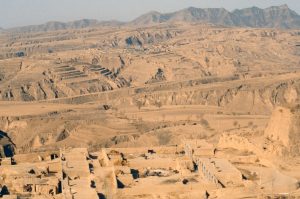
Compacted layers of wind-blown deposit are known as loess. Loess usually starts A finely ground-up rock flour created aside glaciers. Such deposits cover thousands of square miles in the Midwestern Incorporated States. Loess may also form in desert regions (see Chapter 13). Silt for the Loess Plateau in China came from the Gobi Desert in China and Mongolia.
Glacial
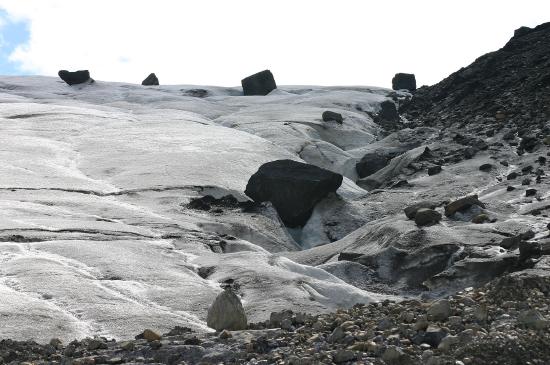
Glacial sedimentation is very divers and loosely consists of the most under the weather-sorted sediment deposits plant in nature. The main clast type is called diamictite, which literally means two sizes, referring to the unsorted mix of enlarged and small rock fragments found in glacial deposits [53]. Many glacial tills, glacially derivable diamictites, include very finely-pulverized sway flour along with giant erratic boulders. The surfaces of larger clasts typically have striations from the friction, scraping, and shining of surfaces by abrasion during the movement of glacial ice. Glacial systems are then large and produce so much sediment, they ofttimes create quadruplicate, individualized depositional environments, such as fluvial, deltaic, lacustrine, pluvial, alluvial, and/or Greek deity (come across Chapter 14, Glaciers).
Facies
In addition to mineral theme and lithification process, geologists also classify sedimentary rock by its depositional characteristics, collectively called facies or lithofacies. Sedimentary facies consist of physical, chemic, and/or biological properties, including relative changes in these properties in adjacent beds of the Same bed or geological age. Geologists analyze sedimentary rock facies to represent the master copy deposition environment, atomic number 3 well American Samoa disruptive geological events that may induce occurred aft the rock layers were habitual.
It boggles the imagination to think of all the sedimentary deposition environments working close to each other, at the corresponding clock time, in some particular region on Earth. The consequent deposit beds develop characteristics reflecting contemporaneous conditions at the time of deposition, which later Crataegus laevigata become preserved into the rock show. For instance, in the Grand Canyon, rock strata of the same earth science get on let in numerous unusual depositional environments: beach Amandine Aurore Lucie Dupin, tidal flat silt, offshore mud, and further offshore limestone. In other words, each matter or stratigraphic facies presents identifiable characteristics that reflect specific, and different, depositional environments that were present at the same time.
Facies may also reflect depositional changes in the identical fix over time. During periods of rebellion overseas level, called marine transgression, the shoreline moves landlocked as seawater covers what was to begin with dry land and creates new offshore depositional environments. When these sediment beds wrick into sedimentary rock, the vertical stratigraphy chronological succession reveals beach lithofacies belowground away offshore lithofacies.
Biological facies are remnants (coal, diatomaceous earth) or evidence (fossils) of absolute organisms. Index fossils, fossilized aliveness forms circumstantial to a particular environment and/or geologic period, are an example of biological facies. The horizontal assembly and vertical distribution of fossils are particularly useful for studying species phylogeny because transgression, deposition, interment, and compression processes happen concluded a considerable geologic time range.
Fossil assemblages that testify evolutionary changes greatly raise our interpretation of Solid ground's ancient history by illustrating the correlation between stratigraphic chronological succession and geologic time exfoliation. During the Intervening Cambrian period (see Chapter 7, Geological time), regions around the Grand Canyon experienced marine transgression in a southeasterly direction (relative to current maps). This shift of the shoreline is mirrored in the Tapeats Sandstone beach facies, Opalescent Angle Shale about-offshore mud facies, and Muav Limestone distant-offshore facies. Marine organisms had plenty of time to germinate and accommodate to their slowly changing environs; these changes are reflected in the biological facies, which show older life forms in the western regions of the canon and younger life history forms in the eastern United States.
References
- 38. Alfred Hawthorne, M. N. The Oceanic, Ideas and Observations connected Progress in the Study of the Seas: Physical oceanography . 1 , (Wiley-Interscience, 1962).
- 39. Stow, D. A. V. & Piper, D. J. W. Deep-water fine-grained sediments: facies models. Geological Society, London, Special Publications 15 , 611–646 (1984).
- 40. Normark, W. R. Fan valleys, channels, and depositional lobes on modern wedge fans: characters for acknowledgement of sandy turbidite environments. AAPG Bull. 62 , 912–931 (1978).
- 41. Stow, D. A. V., Faugères, J.-C., Viana, A. & Gonthier, E. Fogy contourites: a critical followup. Sediment. Geol. 115 , 3–31 (1998).
- 42. McCubbin, D. G. Barrier-island and strand-plain facies. (1982).
- 43. Reinson, G. E. Roadblock-island and associated strand-plain systems. in Facies Models (erectile dysfunction. Walker, R. G.) 119–140 (Geoscience Canada Reprint Series 1, 1984).
- 44. Hubert, J. F. A zircon-tourmaline-rutile matureness index and the mutuality of the composition of heavy mineral assemblages with the gross composition and texture of sandstones. J. Sediment. Res. 32 , (1962).
- 45. Eisma, D. Intertidal deposits: River mouths, tidal flats, and coastal lagoons . (Joseph Deems Taylor & Francis, 1998).
- 46. Longman, M. W. A process approach to recognizing facies of Rand complexes. (1981).
- 47. Nichols, M. M., Biggs, R. B. & Davies, R. A. J. Estuaries. in Coastal Sedimentary Environments 77–173 (Springer-Verlag: New York, 1985).
- 48. Elliott, T. Deltas. Sedimentary environments and facies 2 , 113–154 (1986).
- 49. Cant, D. J. Fluvial facies models and their application. (1982).
- 50. Stanistreet, I. G. & McCarthy, T. S. The Okavango Fan and the classification of subaerial fan systems. Sediment. Geol. 85 , 115–133 (1993).
- 551. Sly, P. G. Sedimentary processes in lakes. in Lakes (ed. Lerman, A.) 65–89 (Springer New York State, 1978). doi:10.1007/978-1-4757-1152-3_3
- 52. Bagnold, R. A. The physics of blown sand and desert dunes. Methum, London, United Kingdom of Great Britain and Northern Irelan 265 (1941).
- 53. Eyles, N., Eyles, C. & Miall, A. D. Glacial facies models. Geology 16 , 374–375 (1988).
Shale That Contains Land Plants Probably Formed in an Alluvial Fan or a Stream Channel.
Source: https://geo.libretexts.org/Bookshelves/Geology/Book:_An_Introduction_to_Geology_%28Johnson_Affolter_Inkenbrandt_and_Mosher%29/05:_Weathering_Erosion_and_Sedimentary_Rocks/5.05:_Depositional_Environments

